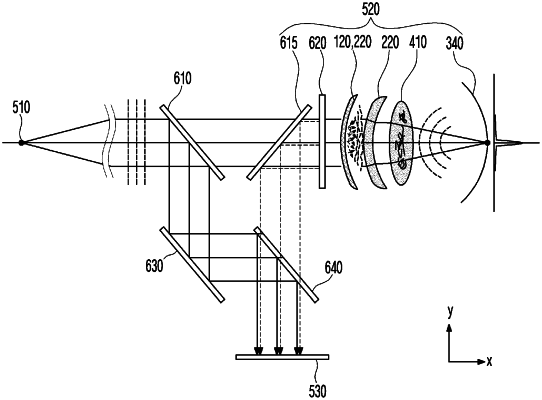| CPC A61B 3/1176 (2013.01) [A61B 3/1015 (2013.01); G02C 7/02 (2013.01); G02C 2202/10 (2013.01)] | 7 Claims |

|
1. An optical modulator, comprising:
a sensor sensing a property of light entering an eye and a property of light reflected by the eye;
a memory storing the sensed property of each light ray and an optimal modulation light property of a light modulator according to the property of the light ray, with the property of the light matched with the optimal modulation light property;
a controller analyzing the property of the light sensed by the sensor, selecting the optimal modulation light property of the light modulator in the memory, and controlling the light modulator to have the selected modulation light property; and
the light modulator having a modulation light property according to control of the controller and modulating the property of the light entering the eye, which is scattered in the eye, to form an inversely scattered light pattern, thereby allowing the light entering the eye to be focused on the retina,
wherein the optimal modulation light property of the light modulator means that when light with a predetermined property enters the eye, the modulation light property of the light modulator has the closest detected value to the detected value for the property of interfering light for a normal eye in which there is no cloudiness,
wherein the modulation light property includes a phase, strength, or intensity of the light, and
wherein the light entering the eye interferes with the light reflected out of the eye, and the interfering light creates an interference pattern according to the degree of eye opacity.
|